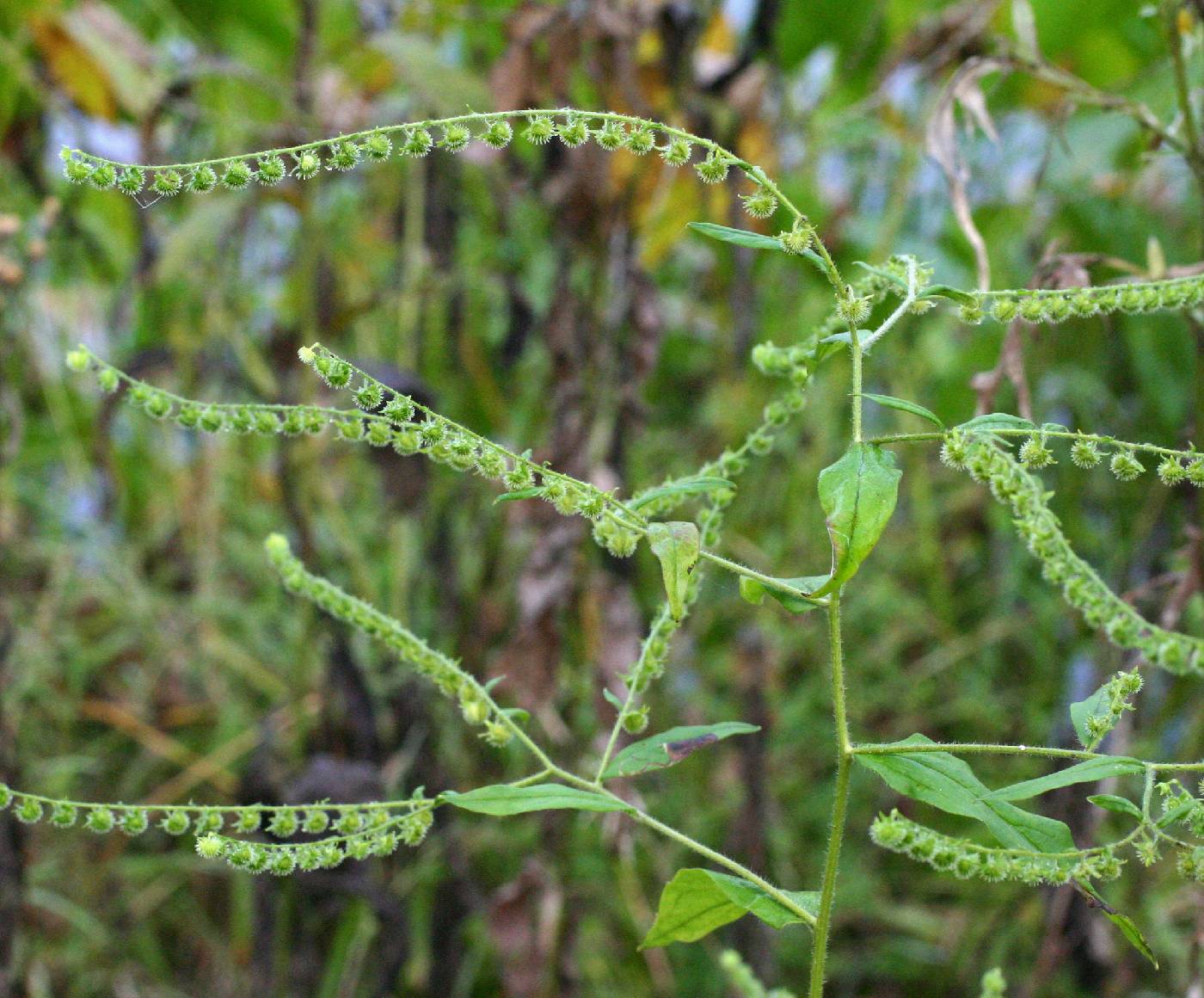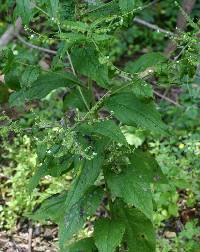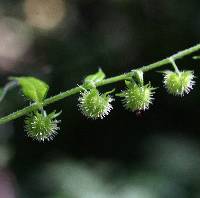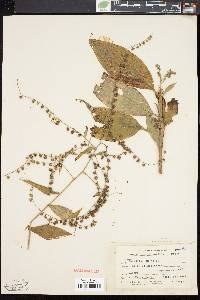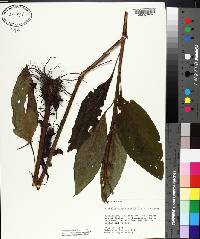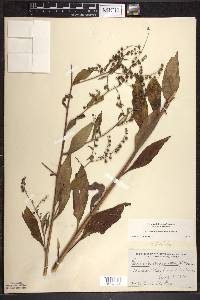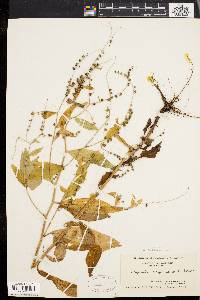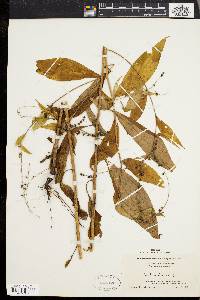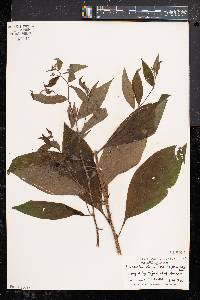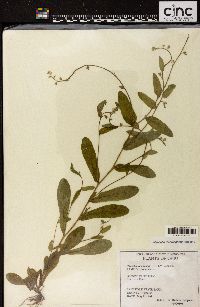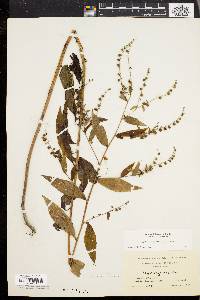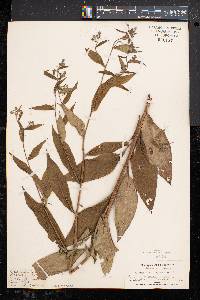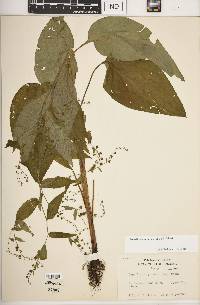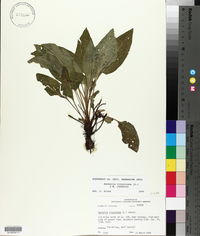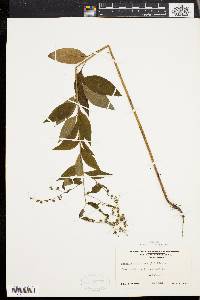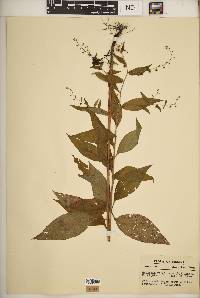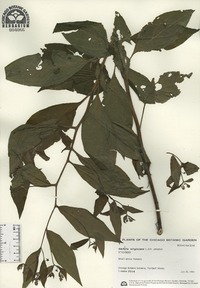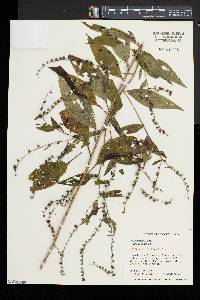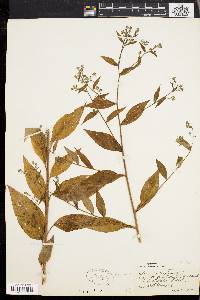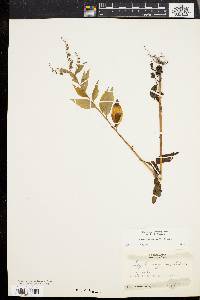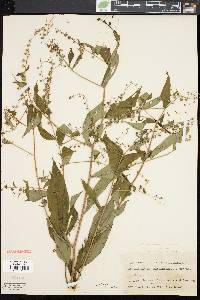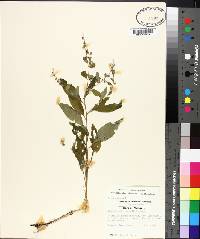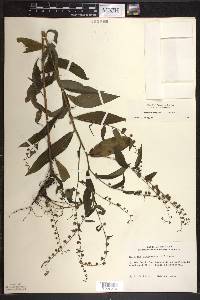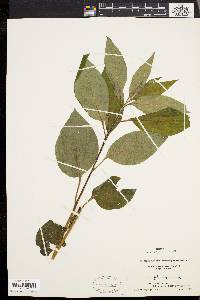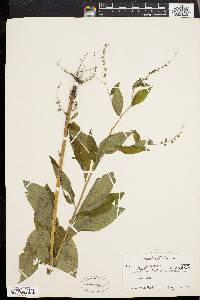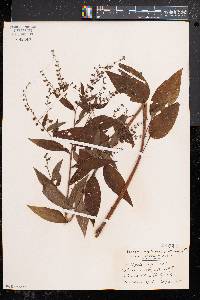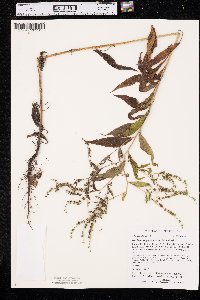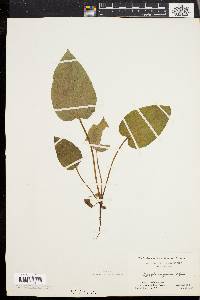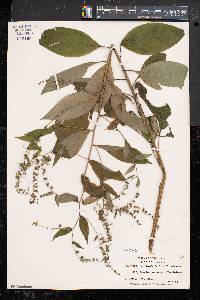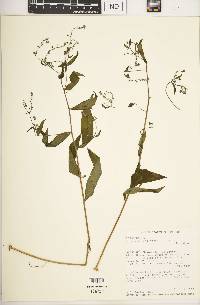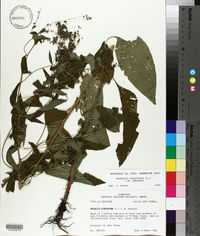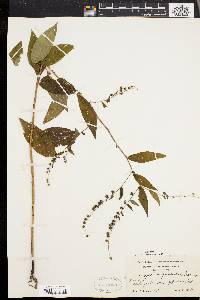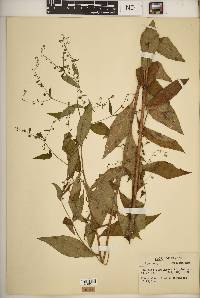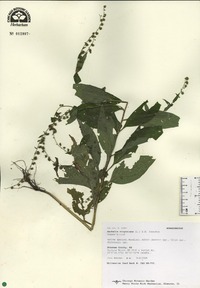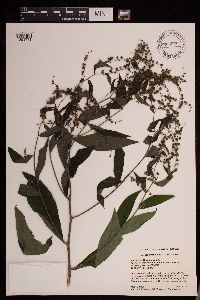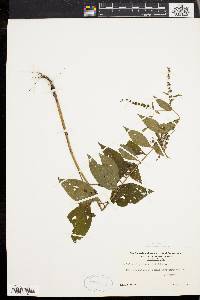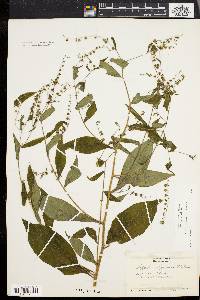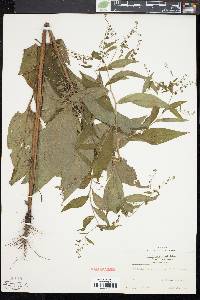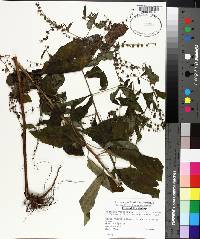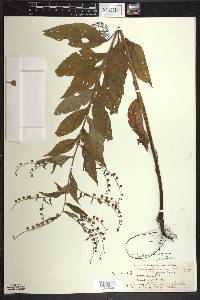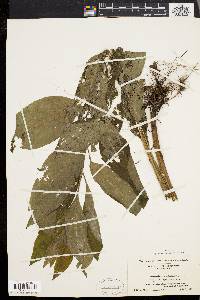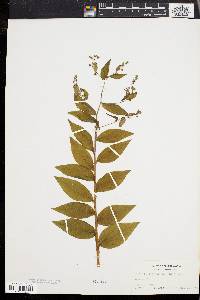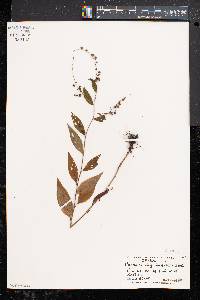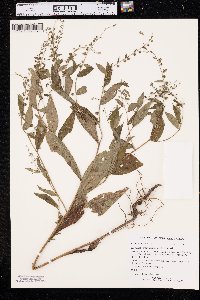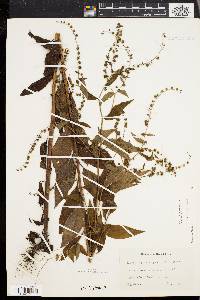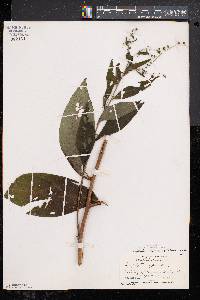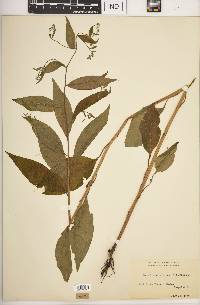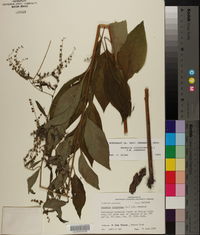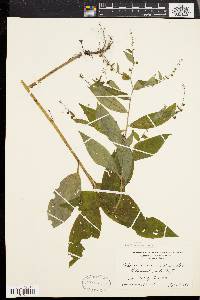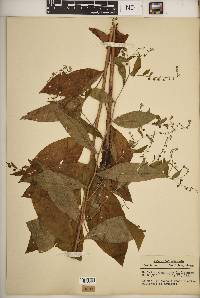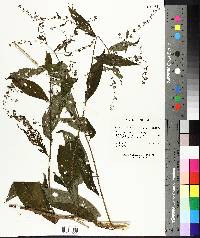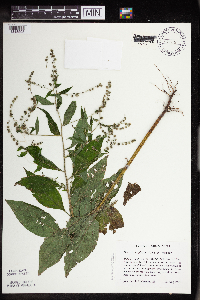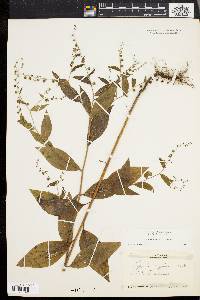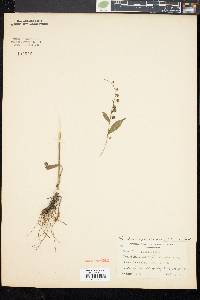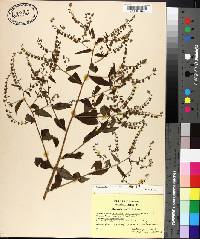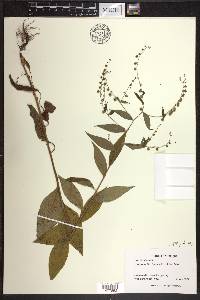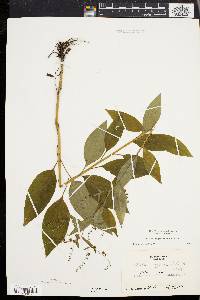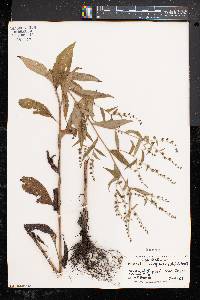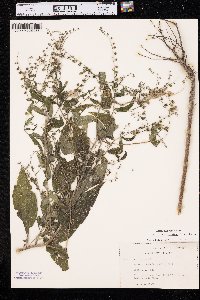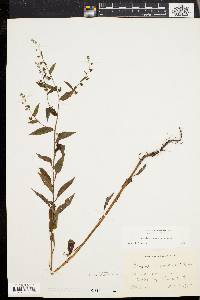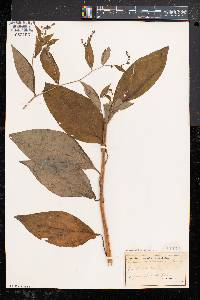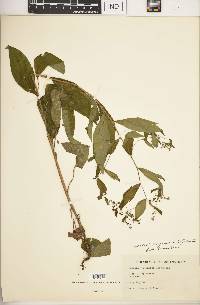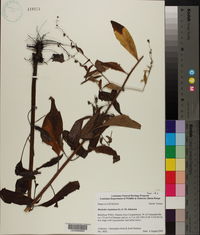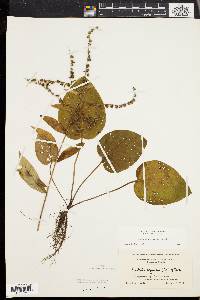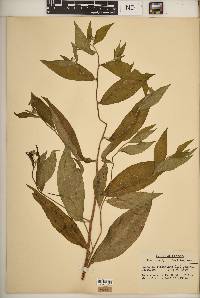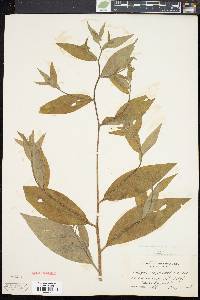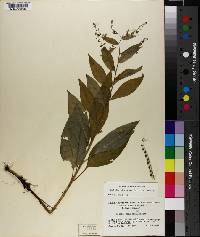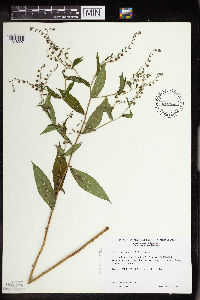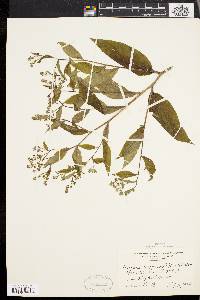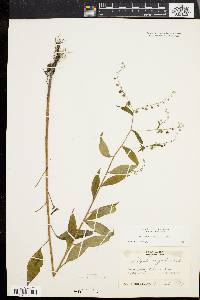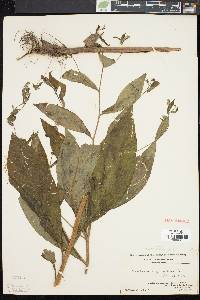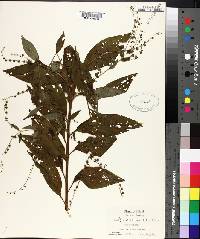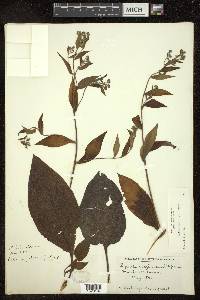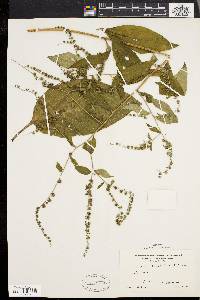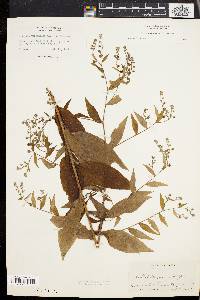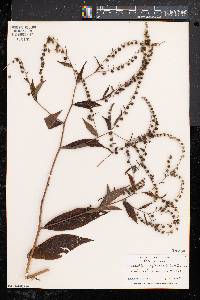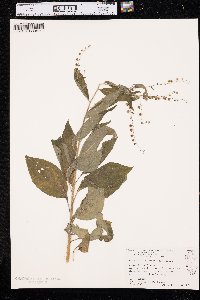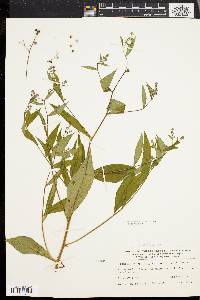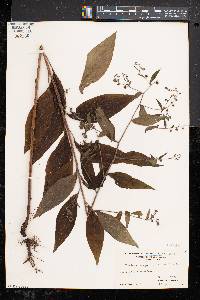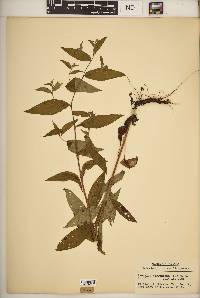Hackelia virginiana
|
|
|
|
Family: Boraginaceae
Beggar's-Lice, more...stickseed, beggarslice
[Echinospermum virginianum (L.) Britton, Sterns & Poggenb., moreEchinospermum virginicum (L.) Lehm.] |
Biennial herb 30 cm - 1.2 m tall Stem: erect or ascending, stout, rough, spreading-hairy, freely branching above, and arising from a taproot. Leaves: alternate, stalkless (though lower leaves stalked), non-toothed, spreading-hairy, 5 - 15 cm long (lowest leaves to 30 cm), 2.5 - 9 cm wide, oblong-elliptic, abruptly narrowed at both ends, with evident lateral veins. Inflorescence: axillary, stalked, widely spreading, normally paired, 5 - 15 cm long, spreading- to ascending-hairy, loose, spike-like branches with many, short-stalked, small, whitish to pale blue flowers alternating with small, lance-shaped to linear, hairy bracts, which decrease in size and disappear before the end of the branches. Flowers: many, alternate, short-stalked, white or pale blue, very small, about 2 mm tall, 2 - 4 mm wide, radially symmetric, funnel-shaped, with five spreading lobes. The short flower stalks (about 2 mm) become recurved shortly after flowering, and increase up to 1 cm long in fruit. Sepals: five, erect to ascending, under 5 mm long (but at least as long as petal tube), rough-hairy, somewhat lance-shaped with narrowed and pointed tips. Petals: five, but fused for over half their length into a tube which may be shorter than the sepals, then separating into five, spreading, relatively short, rounded lobes. At the base of the spreading petal lobes, the throat of the petal tube is blocked by five small projections or appendages (fornices). Stamens: five, attached to inside of petal tube, but not extending past the petal tube. Pistil: with one, four-lobed, superior ovary; and one short style which arises from between the four ovary lobes and never extends beyond the petal tube, and usually not past the mature fruit. Fruit: a prickly, 2 - 3 mm tall, rounded, ball-like cluster of four, connected, spine-covered nutlets subtended by persistent, recurved sepals terminating 2 - 10 mm long, recurved or reflexed stalks. The nutlets are somewhat three-sided and somewhat egg-shaped with two fairly flat inner sides, and a rounded convex outer side, which at its two edges (adjacent to inner sides) are a single row of prominent, wide based, stiff, barbed or hooked prickles, and across the entire outer surface there are another ten to twenty-five, barbed prickles of the same length. Similar species: Hackelia virginiana is very similar to Lappula redowskii and L. squarrosa, but those species lack evident lateral veins on their leaves, all of the flowers are always subtended by bracts, and the fruit stalks are ascending, not reflexed. Also somewhat similar is Cynoglossum virginianum var. boreale, except that taxon has some clasping leaves, the nutlets are easily distinguished as four egg-shaped sections rather than a single four-sectioned ball, and the surface prickles on the nutlets are slender throughout and not as long or robust. Cynoglossum officinale differs by having more reddish flowers, usually single axillary inflorescence branches, and the nutlets are flattened on their outer face, and they surround the obvious, erect, persistent, pointed style. A more northern and western species of Hackelia, H. deflexa, is very similar but the nutlets only have barbed prickles along their edges, not the entire outer surface. Flowering: July to October Habitat and ecology: Frequent in somewhat disturbed woodlands, or along wooded trails, and occasionally in heavily grazed, but shaded areas, even when burning has recently occurred. Occurence in the Chicago region: native Notes: One of the common names for this plant is "stickseed", which is very appropriate due to the barbed prickles on the fruit. These barbs attach very easily to clothes or animal fur, not unlike Velcro. The nuts can accordingly be dispersed far from their point of origin. They are also very difficult to remove from clothing and fur, which accounts for the other common name of "beggar's lice". Author: The Field Museum Stout biennial to 1(-1.5) m, freely branched above; lower lvs to 3 dm, narrowed to a petiole; middle and upper lvs oblong-elliptic, 5-15 cm, sharply narrowed to both ends, sessile, the uppermost passing into the small, lanceolate to linear bracts; racemes spreading, eventually 5-15 cm; bracts often alternating with the fls, those beyond the middle minute or lacking; fruiting pedicels 2-10 mm; cor white or pale blue, 2-3 mm wide; dorsal area of the nutlets ovate, 2-3 mm, verrucose and bearing 10-25 erect prickles as long as the marginal ones; 2n=24. Upland woods; s. Que. to N.D., s. to Ga., La., and Tex. July-Sept. (Lappula v.) Gleason, Henry A. & Cronquist, Arthur J. 1991. Manual of vascular plants of northeastern United States and adjacent Canada. lxxv + 910 pp. ©The New York Botanical Garden. All rights reserved. Used by permission. From Flora of Indiana (1940) by Charles C. Deam This is strictly a woodland species and is found throughout our area in dry woods of all kinds, although it is most abundant in beech and sugar maple and white oak woods. It is rarely found in very wet or springy places. ...... Indiana Coefficient of Conservatism: C = 0 Wetland Indicator Status: FACU |

